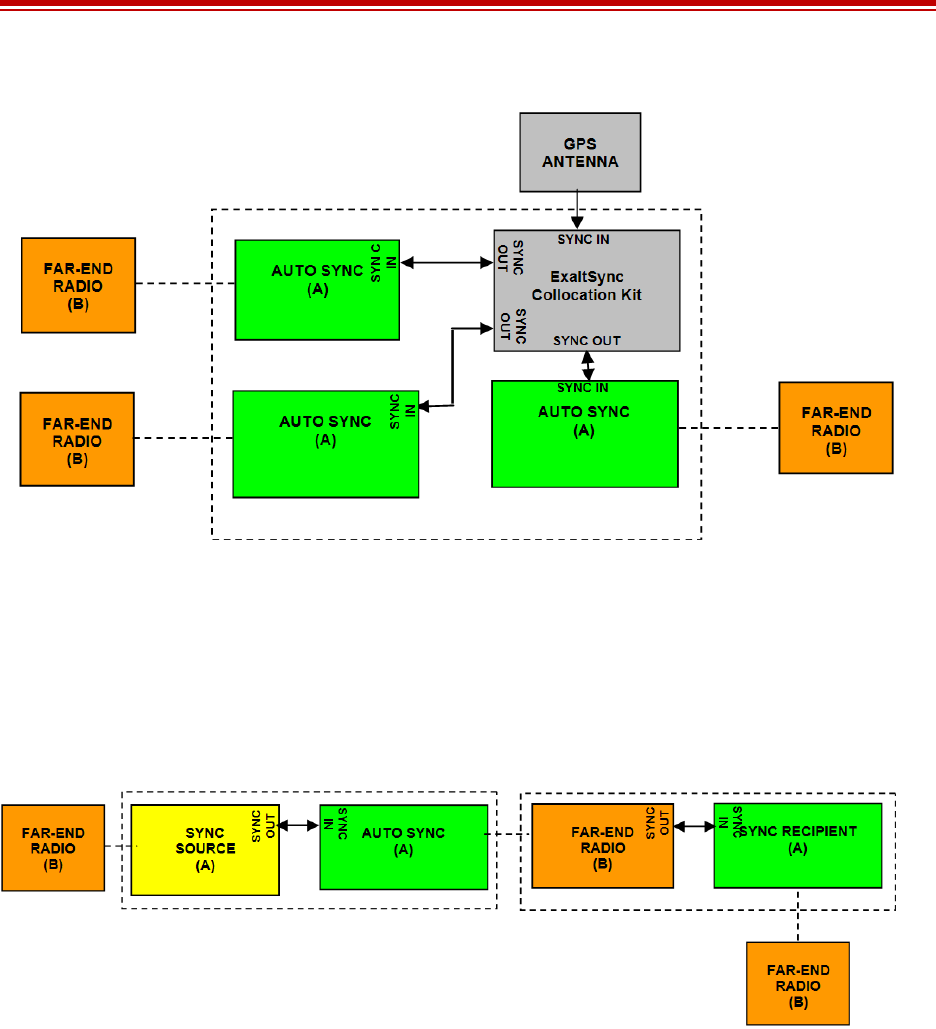User Manual
Table Of Contents
- ExtendAir® (TDD) Series Digital Microwave Radios Installation and Management Guide
- Legal Notice
- Open-Source License Information
- Table of Contents
- Notes for Customers of the Cisco Configuration ExtendAir r5005
- About this Document
- Introduction
- Pre-installation Tasks
- Link Engineering and Site Planning
- Familiarization with the ExtendAir (TDD) Series Radios
- Initial Configuration and Back-to-Back Bench Test
- Time Division Duplex (TDD) Factors
- Link Orientation and Synchronization
- Radio Synchronization
- Offset Timing
- Virtual Local Area Network (VLAN)
- Simple Network Management Protocol (SNMP)
- System Installation and Initiation Process
- Installation
- Configuration and Management
- Telnet into the Command Line Interface (CLI)
- Telnet
- Exalt Graphical User Interface (GUI)
- Quick Start
- Navigating the GUI
- Radio Information Page
- Administration Settings Page
- NTP and Time Zones Configurations Page
- Simple Network Management Protocol (SNMP) Configuration
- File Management Pages
- File Transfer Page
- File Activation Page
- System Configuration Page
- Ethernet Interface Configuration Page
- T1/E1 Configuration Pages
- VLAN Configuration Page
- Ethernet Rate Limiting
- QoS Configuration Page
- Automatic Channel Selection (ACS) Page
- Syslog Configuration Page
- GPS Information Page
- Alarms Page
- Performance Page
- Event Log Page
- User Throughput Page
- Diagnostic Charts Page
- Spectrum Analyzer Page
- Ethernet Utilization Page
- Reboot Page
- Manual Page
- Specifications
- Interface Connections
- Antennas
- Troubleshooting
- Back-to-back Bench Testing
- General Compliance and Safety
- Dynamic Frequency Selection
- Safety Notices
- Regulatory Notices
- Regulatory Compliance
- EIRP Limits for the United States and Canada
- EIRP Limits for Australia
- EIRP Limits for the European Union and ITU Countries
- Declaration of Conformity to the R&TTE Directive 1999/5/EC
- Exalt Limited Hardware Warranty Software License and RMA Procedures Agreement
- Copyright Notices
- Index

Exalt Installation and Management Guide
ExtendAir (TDD) Series Digital Microwave Radios
203591-011 15
2013-02-22
Figure 7 GPS Sync for more than one collocated radios
At the far end of a synchronized link, if there are additional links to synchronize, use the Sync Out port
of the Radio B to drive synchronization to the collocated radios. If there is only one additional radio,
connect a cable from Sync Out to the Sync In port of the next radio, which should be configured as
Radio A. Set this radio in the chain to Sync Recipient, as shown in Figure 8. If more than one radio is
located at the secondary location, to drive synchronization for multiple Radio A terminals connect a
ExaltSync Collocation Kit driven from the Radio B Sync Out port.
Figure 8 Synchronization for radios in a chain
Offset Timing
For GPS implementations, manual control of offset timing is also allowed. This provides a means to
delay the synchronization signal using a user-defined offset. This is helpful when Exalt radios are near
other devices operating in the same frequency band that also use a timing source, such as GPS. The
timing source to the Exalt radios can be adjusted to match the other radio system timing source
mechanism.
Offset timing can also optimize timing intervals for repeaters and backbones. As the distance of each
link results in a unique factor for speed-of-light transmission of the radio signal, a subsequent radio can
be delayed in timing so that the overall synchronization of radios is precisely maintained.
Offset timing can be adjusted in 1-ms intervals, from zero to the radio’s frame length setting. For
example, if using a 2-ms frame length, the offset timing can be set from zero up to 1999 ms.










